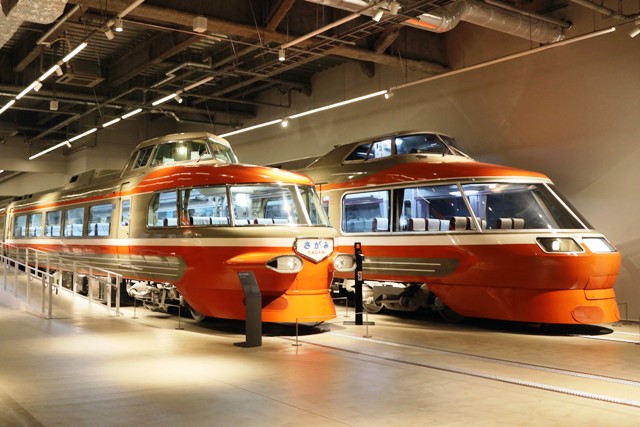The EMU Odakyu 7000 series, "LSE Car", is exhibited in the Romancecar Museum
Let me resume from where I left off my post from six days ago.
After a reunion with NSE (New Super Express) Car, I observed LSE (Luxury Super Express) Car in the Romancecar Museum. If you are a longtime reader of my blog, you probably know LSE, the EMU Odakyu 7000 series. It was launched in 1980 to replace the deteriorated NSE. 4 sets, 44 units in total, were built by Nippon Sharyo and Kawasaki Heavy Industries. Similar to NSE, LSE is articulated cars. The electric control system is rheostatic. The power regenerative brake is not equipped, since LSE is a limited express train that makes the fewest stops. LSE inherited its unique design from NSE. The cockpit is upstairs, so that the passengers could enjoy the view ahead. The classical moquette seats are also similar. On the other hand, LSE has some new designs such as automatic folding doors.
After operating for 38 years, LSE was retired from the track in October 2018. LSE once had wine red-colored bodies, but Odakyu returned it to the original color design, namely orange vermilion, gray and white before the retirement. It was a wonderful gift for rail-fans. One unit of LSE, DeHa 7003, is currently exhibited alongside NSE in the Romancecar Museum. That allows us to compare the two models with ease. LSE clearly looks sharper than NSE. The angle of LSE's front window is 48 degrees; while, it's 60 degrees on NSE.
LSE is indeed the evolutionary form of NSE Car.

